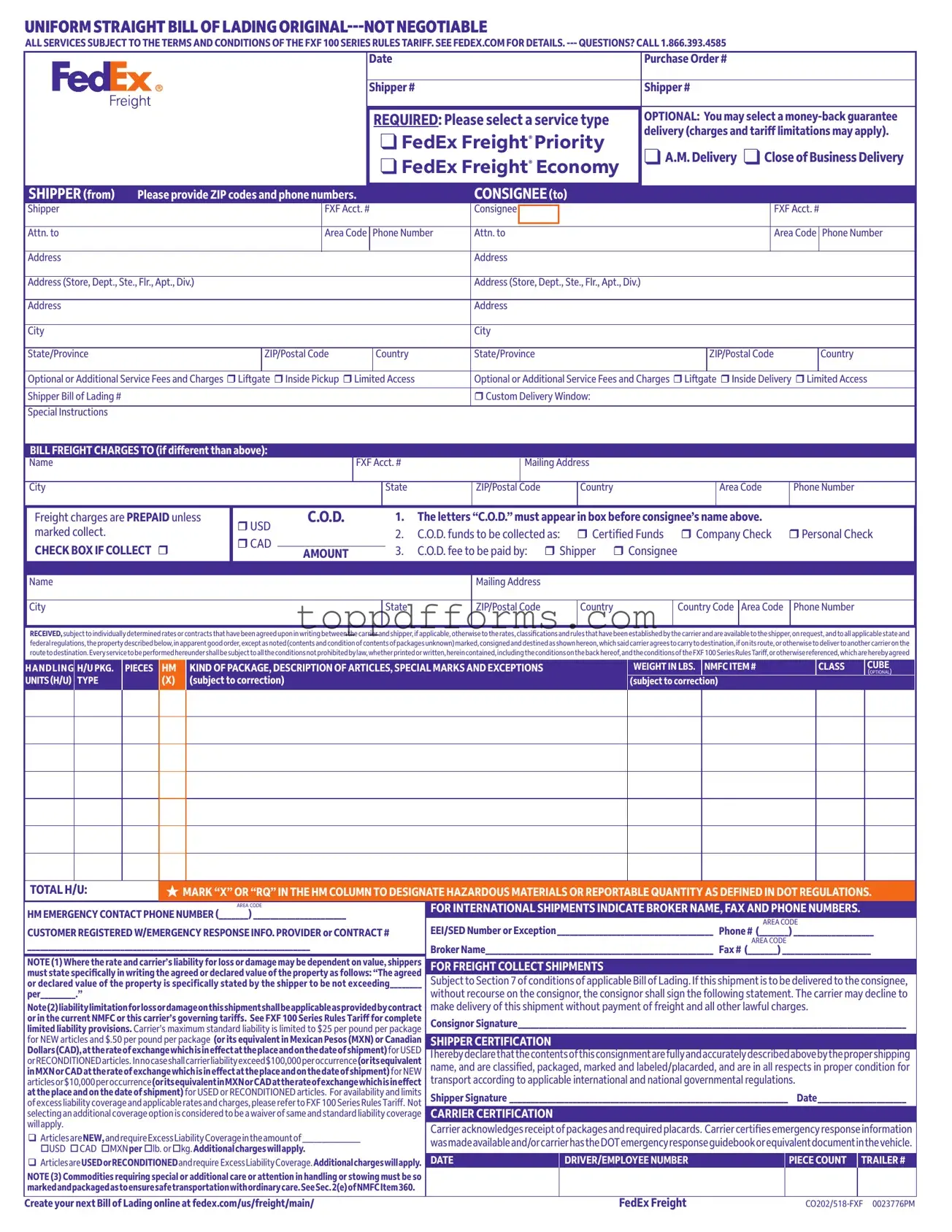What is a FedEx Bill of Lading?
A FedEx Bill of Lading (BOL) is a crucial document used in the shipping process. It serves as a contract between the shipper and the carrier, outlining the details of the shipment. This document includes essential information such as the sender's and recipient's addresses, the type of service selected, and any special instructions. It also specifies the freight charges and terms of service. Essentially, the BOL acts as a receipt for the goods being transported, confirming that the carrier has received the shipment in good condition.
How do I fill out the FedEx Bill of Lading form?
Filling out the FedEx Bill of Lading form requires attention to detail. Start by entering the date and your purchase order number. Then, provide the shipper and consignee information, including names, addresses, and contact numbers. Select the appropriate service type, and if applicable, indicate any additional services like liftgate or inside delivery. Be sure to specify whether freight charges are prepaid or if they will be collected upon delivery. Lastly, describe the items being shipped, including weight and any special handling instructions. Accuracy is key to ensure smooth processing.
What should I do if I need to make changes to the Bill of Lading after it has been created?
If you need to make changes to the Bill of Lading after it has been created, it is important to contact FedEx as soon as possible. Depending on the nature of the changes, you may be able to amend the existing document or you might need to create a new Bill of Lading. Keep in mind that changes may affect shipping costs and delivery times. Always ensure that the updated information is communicated clearly to avoid any misunderstandings or delays in the shipping process.
What are the consequences of not including accurate information on the Bill of Lading?
Providing inaccurate information on the Bill of Lading can lead to several issues. It may result in delays in delivery, additional charges, or even loss of the shipment. If the details do not match the actual contents or destination, the carrier may refuse to transport the goods. In some cases, incorrect information could also lead to legal implications or liability for damages. Therefore, it is essential to double-check all entries before submitting the form to ensure compliance and smooth shipping.
What is the significance of the C.O.D. option on the Bill of Lading?
The Cash on Delivery (C.O.D.) option allows the shipper to collect payment from the consignee at the time of delivery. This is particularly useful for transactions where the shipper wants to ensure payment before the goods are handed over. When selecting C.O.D., it is crucial to clearly indicate this on the Bill of Lading, along with the method of payment. This option provides an added layer of security for the shipper, but it also requires careful communication with the consignee to avoid confusion during delivery.
How can I track my shipment after creating a Bill of Lading?
Once you have created a Bill of Lading, tracking your shipment is straightforward. You can visit the FedEx website and enter your tracking number, which is typically provided on the Bill of Lading. This number allows you to monitor the status of your shipment in real-time, providing updates on its location and estimated delivery date. Additionally, you can contact FedEx customer service for assistance if you encounter any issues or have questions about your shipment's progress.
